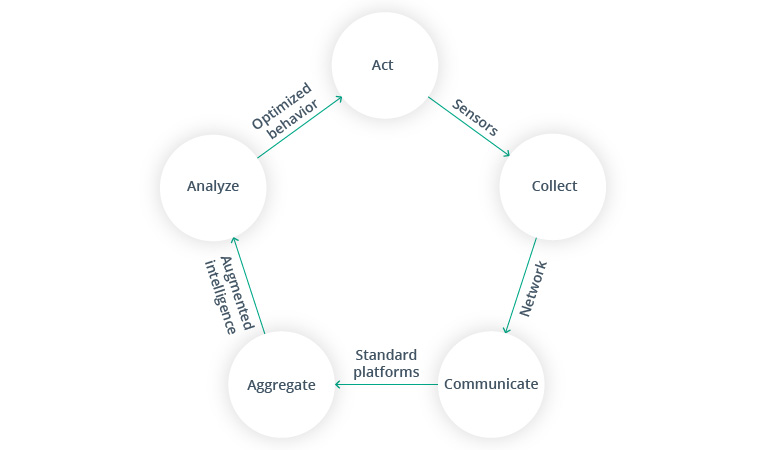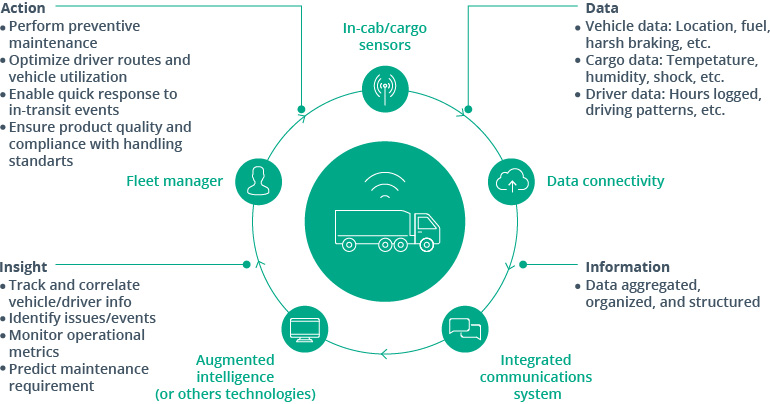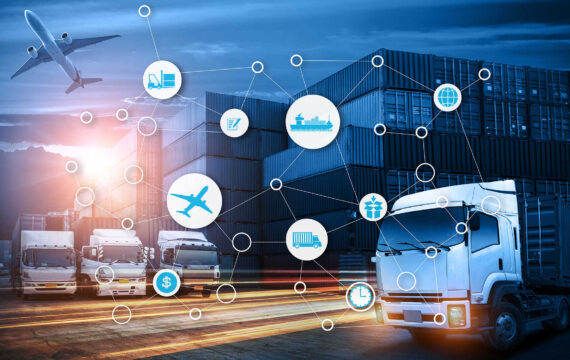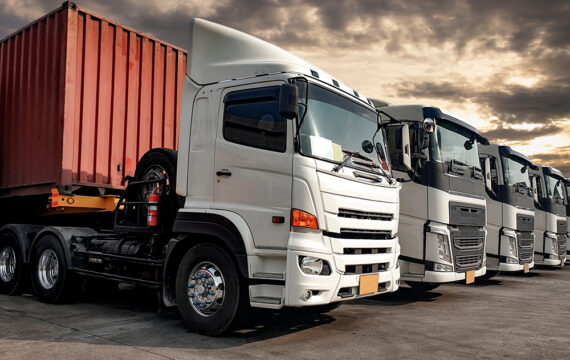The global logistics market is set to increase to $15.5 trillion by 2024, growing at a CAGR of 7.5% between 2016 and 2024. But even though the industry is rapidly growing, many organizations still lack visibility into their supply chains. Due to the silos between technology, people, and processes, they face logistics blind spots and inefficiencies. The good news is that these problems are solvable.
IoT transportation and logistics is a match made in heaven. With the help of recent innovations in logistics and transportation, companies can ensure transparency and agility in the supply chain while still meeting regulatory requirements. What are the benefits of an all-encompassing IoT transportation ecosystem and what will it take to implement one in your organization?
Let’s talk about how to make supply chain processes more efficient with a continuous data flow in IoT transportation.
- How IoT in transportation and logistics turns data into value
- What data shows the most promise for an effective IoT logistics value loop?
- How the continuous data flow in IoT transportation works
- How to ensure a successful transition to an IoT logistics ecosystem
- The benefits of a continuous data flow for IoT in transportation
How IoT in transportation and logistics turns data into value
Implementing the Internet of Things in transportation is not so easy. It takes more than installing a couple of sensors on a smart container. You need to understand the industry dynamics and take a holistic approach to implementation. Nevertheless, IoT brings many exciting opportunities for logistics software development. In essence, what it promises is to transform any object in the supply chain into a data source. However, simply collecting data doesn’t mean that data is going to have any value. The big question is what to do with data to make it useful.
Data becomes actionable when it’s transformed into valuable insights. To understand this process better, let’s go back to the well-known concept of the value chain. The value chain is a set of activities needed to create a product or service. IoT in transportation allows organizations to create that value from a continuous flow of information — the so-called “information value loop”: Collect–Communicate–Aggregate–Analyze–Act. Data becomes valuable as it goes through this cycle.
Value loop of information in an IoT-enabled ecosystem

In an IoT-enabled ecosystem,sensors from vehicles capture and upload data to a logistics cloud system, where it’s aggregated, structured, and transformed into predictive analytics. And with carefully sorted and selected information, it’s possible to train machine learning algorithms to generate insights and even automate processes, from simple to complex. This way, organizations can obtain an accurate picture of what’s going on in their supply chains.
What data shows the most promise for an effective IoT logistics value loop?
One of the main challenges the internet of things transportation solves is supply chain visibility. Despite the growing potential of transportation and logistics, the ability to oversee and track the movement of goods still leaves much to be desired. Traditionally, supply chain monitoring has been milestone-based, meaning data and shipment statuses can only be updated once goods reach certain checkpoints. Between these checkpoints, the status is unknown, so shippers have no choice but to wait until their goods leave the blind spots.
Logistics blind spots in the supply chain

Without full visibility into the supply chain, it’s impossible to understand whether carriers ensure the desired service quality. There’s also no way to tell where exactly goods are located at any given point in time, and thus it’s extremely difficult to predict the estimated time of arrival, not to mention spot any inefficiencies in the supply chain. Lack of access to information leaves little room for improvement. With IoT-enabled real-time cargo tracking and big data analytics, it’s possible to create an automated continuous data flow and ensure full visibility all the way through the supply chain.
Real-time supply chain visibility through an IoT-enabled ecosystem

How a continuous data flow works in IoT transportation
The sensors installed on cargo, shipping containers, and transport vehicles or vessels capture telematics data and location data throughout the journey. That data is transmitted to the cloud via GPS and mobile networks. Once this data is in the cloud, it can be accessed by any authorized party from anywhere and at any time.
The great thing about IoT in logistics is that it provides a near real-time picture of the location, condition, and surroundings of shipped goods. The possibility to access this data makes the supply chain fully transparent. There’s no need to wait until cargo reaches a checkpoint to view its status. As a result, suppliers can predict, correct, and sometimes prevent problems before they escalate thanks to much faster response times.
Also, greater visibility means a slimmer chance of the supply chain disruption. Finally, IoT data insights are extremely helpful for optimizing shipping routes, improving fleet management security, evaluating carrier performance levels, analyzing logistics carbon footprints, and minimizing associated business risks.
Example of a continuous data flow in transportation

The information in an IoT transportation ecosystem flows seamlessly throughout the network, creating a value loop of data, information, insights, and actions. This data is extremely helpful for routing and shipment tracking, quality compliance, driver performance assessments, fleet management, and safety.
IoT in action: Movement of data in the transportation ecosystem

Source: Deloitte
IoT transportation also creates more opportunities for other areas such as terminal operations, transportation safety, fleet monitoring and routing, predictive maintenance, product life management, and so on. Moving an organization from manual checkpoint-based systems to an IoT-enabled continuous data flow will make the supply chain more efficient and transparent almost immediately. However, this transition is not going to be easy.
How to ensure the successful transition to a logistics IoT ecosystem
Just like any digital transformation, the shift from disconnected to fully integrated transportation takes time. To make this transition successful, it’s important to approach it strategically: identify goals, prepare your organization for the transition, and only then implement innovative logistics technologies.
Ideally, the choice of the best digital adoption strategy should be based on business needs. Once your goals are in place, it will be much easier to create a transition roadmap. Also, it’s critical to prepare your entire team for the upcoming change and recruit more talent if necessary. Only then does it make sense to start building the actual IoT ecosystem.
Benefits of a continuous data flow for IoT in transportation
IoT in transportation is revolutionary in many ways. It not only improves the operational efficiency of the entire supply chain but creates more revenue opportunities for businesses. In this sense, IoT in transportation and logistics is more than a tool for tracking goods. It’s a sure-shot way to grow market competitiveness. What are the benefits of this symbiosis of IoT and logistics?
Asset tracking
Unlike standard methods with barcodes and tracking numbers, IoT-enabled RFID and GPS asset tracking provide instant access to product information from anywhere, at any time. This allows manufacturers to monitor the status of goods during transportation, which also means better quality control, fewer delays, and more opportunities for forecasting.
Combined with predictive analytics, IoT in transportation provides maximally accurate information about market demand, which otherwise would be an educated guess. It also allows companies to record sales in real time and monitor product use patterns for end users. With such strong end-to-end visibility, companies can make production and distribution adjustments in real time, reducing costs and increasing manufacturing efficiency.
Process optimization
With more actionable data at hand, organizations can adjust their transport, storage, and production schedules to make transportation maximally effective. And higher service quality usually means better relationships with customers and other stakeholders.
Better forecasting and inventory management
Companies can optimize inventory management and eliminate human error by installing IoT sensors on devices and machinery. And with connected fleets, they may also get real-time updates on locations, safe driving behavior, faster routes, and other things to ensure goods are delivered to customers on time.
Preventive maintenance
One more application of an IoT-enabled data flow in transportation is problem detection and predictive fleet maintenance. The ability to minimize machinery-related issues and fix impending problems before they develop into costly breakdowns is extremely important for any organization.
Conclusion
IoT in transportation and logistics brings plenty of opportunities for the entire industry. It enables much-wanted continuous data flows that are impossible to achieve with traditional systems. And combined with machine learning and AI, it can make supply chains fully transparent and efficient like never before. All in all, the benefits of implementing an IoT transportation ecosystem are undeniable. The key is to embrace this technology gradually and strategically.
Looking for help implementing transportation and logistics innovations in your organization? Get in touch with the Intellias team to uncover new opportunities for your business.



